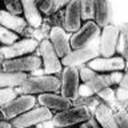Vesicular Stomatitis

Vesicular stomatitis is a reportable and zoonotic disease which is indistinguishable clinically from foot and mouth disease as well as other vesicular diseases. Unlike FMD, VS has a relatively low mortality, but does cause significant economic losses due to decreased weight gains, increased culling, reduced milk production, and increased labor costs in food animals as well as decreased performance, increased stall rest and increased labor costs in horses. The host range of VS is much more diversified than other vesicular diseases and includes susceptibility of horses, swine, cattle, llamas, sheep, goats, deer, bobcats, raccoons, monkeys and humans. Because of the implications to human health and the ramifications of suspected foot and mouth disease, it is imperative to report any suspected vesicular disease to the Indiana State Veterinarian.
Vesicular stomatitis is caused by an RNA virus within the family Rhabdoviridae. There are two serotypes: Indiana and New Jersey. The Indiana serotype has three subtypes: Indiana-1, Indiana-2, and Indiana-3. The serotypes have different epidemiologic and pathogenicity characteristics where the New Jersey serotype has a slightly higher attack rate and is more likely to cause hoof lesions. VS is easily inactivated by heat, UV light, and most disinfectants.
The clinical features of VS vary between species. The incubation period ranges from 1-5 days. In horses, cattle, llamas, and alpacas, the first signs of infection include ptyalism and fever. Vesicular lesions typically develop on the tongue and oral mucosa of these species and may progress to ulcers and erosions colonized by secondary bacterial infections. Swine usually exhibit lameness as the first sign of infection. Vesicular lesions in swine are generally located on the coronary band and snout. Cattle may additionally develop lesions around the coronary band, interdigital spaces, and teats although this is less commonly observed. Humans occasionally develop oral vesicles but, more commonly, develop flu-like symptoms including fever, chills, headache, muscle pain and runny nose.
Differential diagnoses for vesicular diseases include foot and mouth disease, swine vesicular disease, vesicular exanthema of swine, infectious bovine rhinotracheitis, bovine viral diarrhea and bluetongue. The following table helps explain the differences in the vesicular diseases.
| Disease |
Major Species Affected |
Transmission |
| Foot and mouth |
Swine, cattle, sheep, goats, African buffalos |
Aerosol, contact, fomites |
| Swine vesicular disease |
Swine, humans |
Contact, fomites |
| Vesicular exanthema of swine |
Swine, marine mammals |
Contact, fomites |
| Vesicular stomatitis |
Horses, cattle, swine, wildlife, llamas, alpacas, humans |
Insects, direct contact |
VS rarely causes death, but may be fatal due to secondary bacterial infections. Vesicles easily rupture so that ulceration and erosions are usually the only gross necropsy findings. Histologic findings may include epidermal edema, hyperplastic epidermis, reticular degeneration, and focal necrosis. VS virus may be seen by electron microscopy in vesicular fluids or fresh lesions.
The epidemiology of VS is not well understood. Evidence suggests that insect vectors carry the virus and are able to infect wildlife, domestic animals, and humans. VS can also be transmitted animal to animal and animal to human through direct contact. In the U.S., VS appears to be enzootic in southern coastal plan states. The southwestern states have experienced an approximately 10 year interval of domestic animal VS outbreaks. The most recent outbreaks occurred in Colorado, New Mexico, and Texas in 1982-1983, 1995-1998 and 2004.
In conclusion, the OIE recognizes VS as a List A disease capable of "very serious and rapid spread, irrespective of national borders, that are of serious socio-economic or public health consequence and that are of major importance in the international trade of animals and animal products." Due to the recent southwestern outbreak in the U.S., it is important to check both state and international regulations regarding necessary testing and requirements for interstate and international shipment of livestock and horses.
-by Lyndsay Cross, Class of 2005
-edited by Dr. Leon Thacker, ADDL Director
References:
-
Karhs RF: 2001. Viral Diseases of Cattle. 2nd ed. Iowa State University Press
-
Murphy et al: 1999. Veterinary Virology, 3rd ed. Academic Press
-
Murray FE: 1998. Medicine and Surgery of South American Camelids, 2nd ed. Iowa State University Press
-
Rodriguez LL: 2002. Emergence and Re-emergence of Vesicular Stomatitis in the United States. Virus Research 85: 211-219.
-
Reed SM, Bayly WM, Sellon DC: 2004. Equine Internal Medicine, 2nd ed. Elsevier USA.
-
Straw et al: 1999. Diseases of Swine 8th ed. Iowa State University Press
-
USDA-APHIS: 2002. Information about Vesicular Stomatitis for the Dairy Producer. Veterinary Services
|